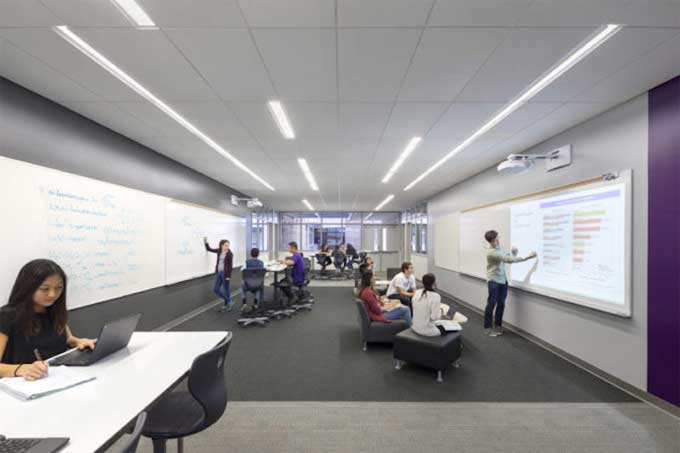The Importance of Understanding how Students learn for School Architects
Tweet
The moment a child learns to ride a bike is one of the most important in a child's life. Once learned, it's a skill you'll never lose. Technique, balance, and physics do not need to discuss in a classroom.
Practicing is the best way, as they say. That would be perfect in the classroom. Students would learn more effectively if they engaged in more activities, group talks, and discussions rather than passively listening to lectures. Science, technology, engineering, and mathematics students do perform better in active learning.
What School Architects should learn?
1. Teachers are open to switching from neat rows of desks to flexible furniture that can provide active learning opportunities.
2. Indoor and outdoor spaces can easily integrate to enhance learning environments while also expanding outreach. Infectious learning can see in watching others.
3. The use of sophisticated tools and equipment, such as smart boards, computers, and wall writing surfaces, can help create a functional and engaging learning environment.
4. A growing number of instructors are taking advantage of opportunities to become more effective teachers. Student engagement is their goal.
5. In the classroom today, we can benefit from methods such as "divide and conquer" and "affinity grouping."
6. Batteries must charge, and all equipment must be in working order when using high-tech equipment. Having technical problems causes instruction time to be lost first-hand.
7. A learning environment can be active without high technology. Students can also be engaged and curious in several ways.
The BIG Takeaway
Primary and secondary schools are more active learning-oriented than high schools, and colleges and universities are more active learning-oriented than elementary and secondary schools.
Students have a strong grasp of technology. A new tool does not take them long to master. Multiple means of receiving information and knowledge are familiar to students. They are quick to engage in lessons thanks to their quick understanding of platforms and methods.
Lectures are boring for many students. Active learning results in more students graduating. Learning environments are mirroring workplace and creative environments, and students find the lessons to be relevant as a result.
Conclusion
There is a frequent discussion between you and the Pre-12 student about the differences between the two. It generally assumes that college students are willing participants, whereas grade school students are captives. Teaching and learning will continue to evolve as our culture does.
To get online demonstration, watch the following video tutorial.
Video Source: Successful Archi Student
As well as supporting and advising their clients, design professionals have a responsibility to think futuristically. It is only then that classrooms and students can design mindfully and purposefully.

Gallery
Feel free to contact us for BIM requirements. One of our representative will respond you within 24 Hours. Send us your projects requirement today and grow your project.
Explore More !







